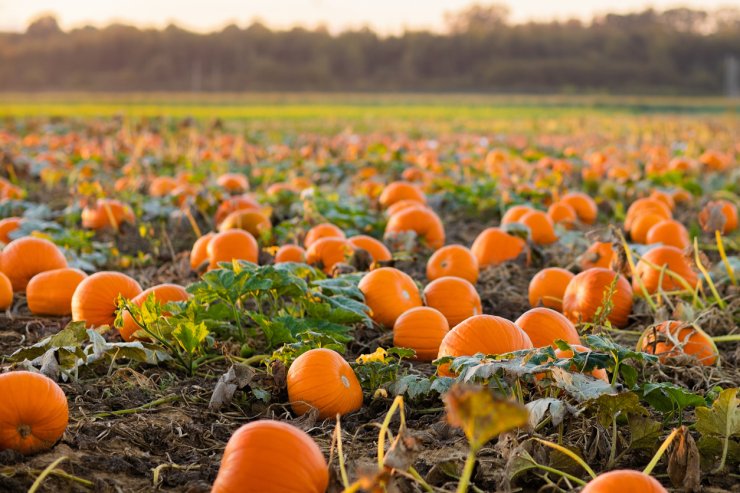
Pumpkin patch
Pumpkins come in four basic growing types: vining, semi-bush, bush, and miniature. They all need lots of sun, lots of space, and lots of water. With their long vines, the vining pumpkins require the most space. But even the miniature varieties need room to roam, with spreads of 4 to 6 feet.
Vining. The vining pumpkins need at least 50 to 100 square feet to call their own. Don’t plant them too close together. When you plant your seeds, plant four or five per hill. Leave at least 5 feet between your hills. And if you’re setting up a big pumpkin patch, you want your rows at least 10 to 15 feet apart. Once your plants are well established, it’s decision time: thin them out, leaving the best two or three plants.
Semi-bush. Plant four to five seeds per hill for semi-bush varieties, with 4 feet between hills and 8 feet between rows. Once your seedlings are up, keep the best two.
Bush. Plant bush variety seeds with one or two seeds for every foot of your row. Allow 4 to 6 feet between rows. When your seedlings are up, thin them to one plant every 3 feet.
Miniature. Miniature varieties should have two or three seeds every 2 feet in the row, with rows 6 to 8 feet apart. Once the seedlings show their first true leaves (those first two flapping leaves don’t count), thin them out to the best plant every 2 feet.
The most common way of starting your pumpkins is building a little mound with a sort of “moat” around it. The mound ensures that the soil is warm enough for the seeds; the moat keeps the water close to the seeds.
As your young plants continue to grow, be sure to pull any weeds that are around them. You don’t want your pumpkins to have to compete for food.
Which type of pumpkins do you grow? Have you had any challenges growing your desired type in your region? Please share any good tips you have for getting your pumpkin patch started.


 Previous
Previous

